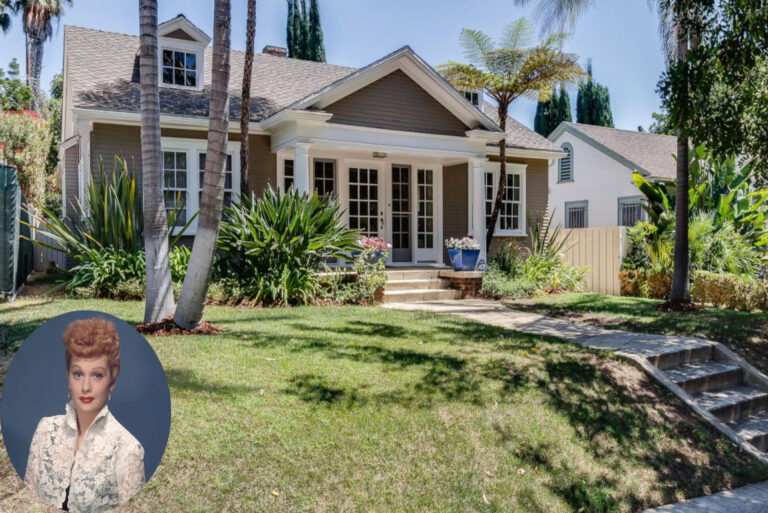When you think of classic American television, one name shines brighter than most: Lucille Ball. As the star of “I Love Lucy,” Lucille Ball became a household name, beloved for her comedic genius, trailblazing spirit, and magnetic personality. But beyond the laughter and the limelight, Lucille Ball was also a woman of remarkable resilience, ambition, and style. Her homes—each with its own story—offer a unique window into her journey from a small-town girl to a Hollywood legend.
Why do celebrity homes fascinate us so much? It’s because they’re more than just bricks and mortar—they’re living museums, filled with memories, dreams, and the echoes of laughter and love.
Lucille Ball’s Childhood Home: 59 Lucy Lane, Celoron, New York
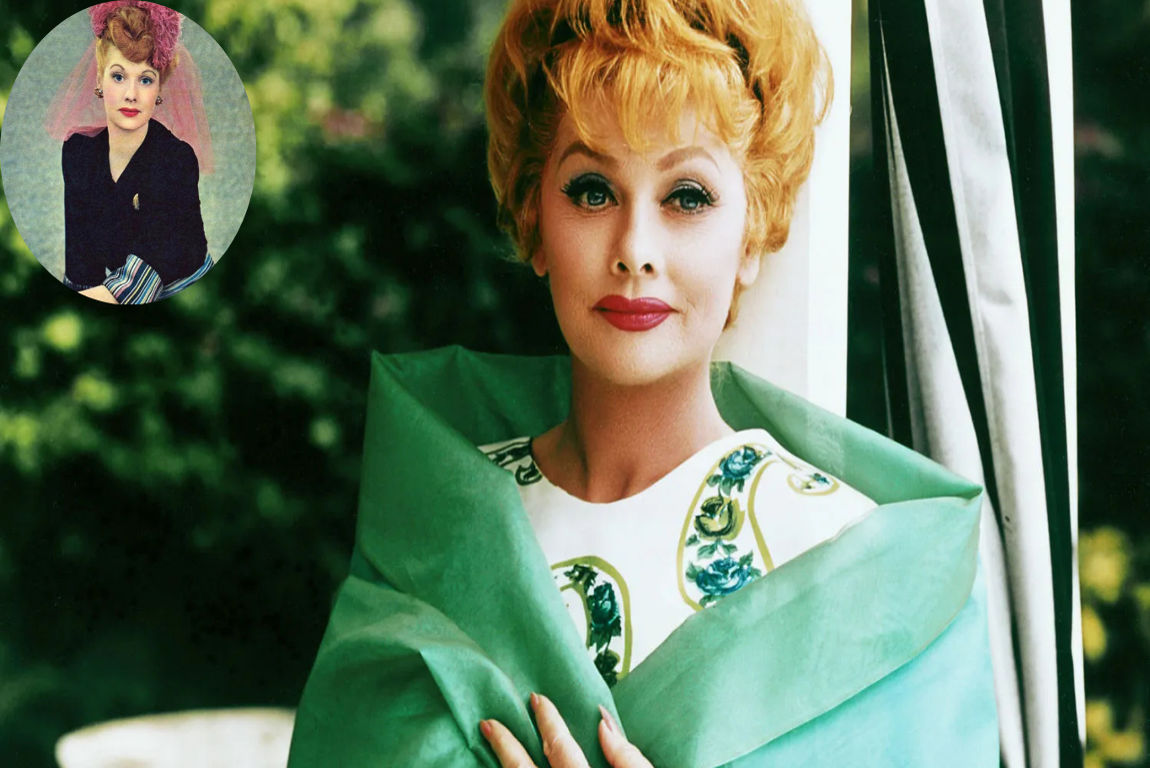
The Humble Beginnings
Long before the glitz and glamour of Hollywood, Lucille Ball’s story began in a modest house at 59 Eighth Street in Celoron, New York. This home, later renamed Lucy Lane in her honor, was the heart of her early years. Purchased by her maternal grandparents, Fred and Flora Belle Hunt, in 1920, the house became a sanctuary for Lucille, her mother Desiree “DeDe” Ball, and her brother Fred after the tragic death of her father, Henry Ball, in 1915.
The house itself was originally a rental, owned by Frederick Hall, publisher of the Jamestown Journal. The Hunts lived there as renters before finally buying it for $2,000—a significant sum at the time. The family’s life here was simple but filled with warmth, laughter, and the kind of close-knit bonds that would shape Lucille’s values for years to come.
Family Life and Early Influences
Life at 59 Lucy Lane was far from easy, but it was rich in love and resilience. Lucille’s mother, DeDe, worked hard to support the family, while her grandparents provided stability and guidance. The home was always bustling with activity, from family dinners to neighborhood gatherings. These early experiences instilled in Lucille a strong work ethic, a sense of humor, and a deep appreciation for family—qualities that would later define her both on and off the screen.
The Tragic 1927 Accident
In 1927, tragedy struck the Ball family. A shooting accident in the backyard left a neighborhood child paralyzed, and Lucille’s grandfather, Fred Hunt, was held responsible. The emotional and financial toll of the incident was devastating. Fred was placed under house arrest, and the family was forced to sell their beloved home in 1928. This loss marked a turning point in Lucille’s life, teaching her the importance of perseverance in the face of adversity.
Restoration and Legacy
Today, the house at 59 Lucy Lane stands as a testament to Lucille Ball’s enduring legacy. Purchased by Bill and Mary Rapaport in 2005, the home has been lovingly restored to its 1920s appearance. The Rapaports have preserved original features like the doors, floors, and woodwork, ensuring that the house remains a living piece of history. While it is privately owned and not generally open to the public, the owners occasionally open it for special events, allowing fans to step back in time and experience the world that shaped a star.
How Her Childhood Home Shaped Lucille Ball
The challenges and joys of Lucille’s early years at 59 Lucy Lane forged her character. The loss of her home, the strength of her family, and the lessons learned in that small house gave her the resilience to chase her dreams. It’s no wonder that, even after achieving fame, Lucille Ball never forgot her roots.
Hollywood Beginnings: Lucille Ball’s Private Bungalow at Paramount Studios
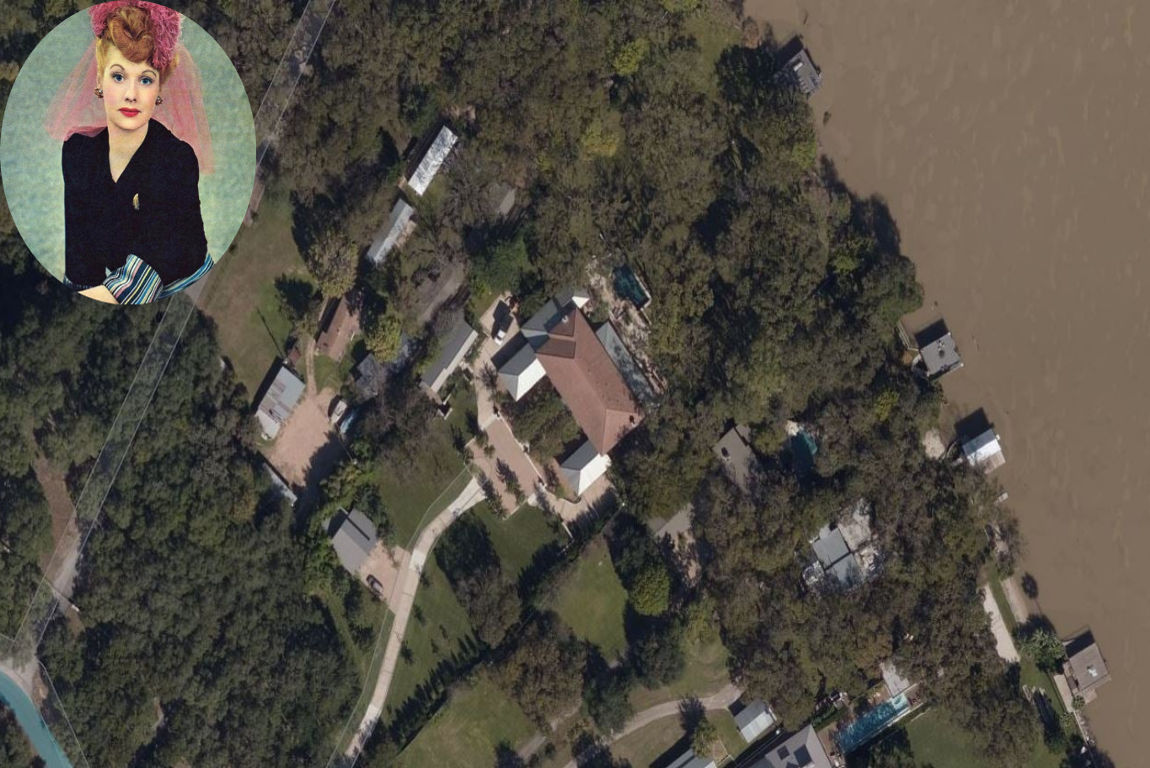
Stepping into the Spotlight
Lucille Ball’s journey to stardom wasn’t an overnight success. After moving to Hollywood, she worked tirelessly in bit parts and B-movies before landing her big break. During these formative years, Lucille found a sanctuary in her private bungalow at Paramount Studios—a place that became both her creative retreat and her command center.
Features of the Paramount Bungalow
The bungalow, nestled on the bustling Paramount lot, was more than just an office. It was a cozy, private space where Lucille could escape the chaos of filming, meet with writers and producers, and recharge between takes. While the exact details of the bungalow’s interior remain a bit of a mystery, it’s easy to imagine it filled with scripts, laughter, and the energy of a woman on the brink of greatness.
A Hub for Creativity and Hard Work
For Lucille Ball, the bungalow was a symbol of her relentless work ethic. She was known for her hands-on approach, often working late into the night to perfect her performances and oversee production details. The bungalow became a hub for brainstorming sessions, script readings, and the kind of behind-the-scenes magic that made “I Love Lucy” a television phenomenon.
You may also read (inside kevin oconnors historic home renovation journey from fixer upper to dream house).
From Actress to Television Pioneer
The Paramount bungalow also marks a pivotal moment in Lucille’s career. It was here that she began to transition from actress to television pioneer, co-founding Desilu Studios with her husband, Desi Arnaz. This move would not only change her life but also revolutionize the television industry, paving the way for future generations of women in entertainment.
The Desilu Ranch: The Dream Home and Creative Hub
The Birth of a Dream Home
In 1941, at the height of their romance, Lucille Ball and Desi Arnaz purchased a sprawling ranch in Chatsworth, in the San Fernando Valley. Known as the Desilu Ranch, this five-acre property was designed by the legendary architect Paul R. Williams, often called the “Architect to the Stars”. Williams’ touch gave the ranch a unique blend of elegance and comfort, making it the perfect retreat for Hollywood’s most famous couple.
Unique Style and Personal Touches
The Desilu Ranch was anything but ordinary. Lucille described its style as “early Victorian meets bastard American”—a playful nod to its eclectic mix of frilly decor, bold colors, and personal mementos. The home was filled with plush furniture, floral prints, and whimsical touches that reflected Lucille’s vibrant personality. Every room told a story, from the cozy living spaces to the sun-drenched kitchen where Lucille loved to cook for family and friends.
A Social and Creative Retreat
The ranch wasn’t just a private haven—it was a social hub for Hollywood’s elite. The property featured a sparkling pool, a spacious guest house, and a legendary barbecue pit where Lucille and Desi hosted unforgettable parties. Friends like Bob Hope, Ginger Rogers, and other stars of the era were frequent guests, drawn by the couple’s warmth and hospitality.
List: Features of the Desilu Ranch
- Five-acre property surrounded by orange groves
- Main house with personalized decor
- Guest house for friends and family
- Swimming pool and barbecue pit
- Fruit trees and gardens planted by Desi Arnaz
- An extra suite built by Desi as a personal retreat
Love, Laughter, and Legendary Fights
Life at the Desilu Ranch was filled with both romance and drama. Lucille and Desi’s passionate relationship was the stuff of Hollywood legend, complete with grand romantic gestures and the occasional fiery argument. Desi even built an extra suite on the property as his personal retreat during their famous spats.
But above all, the ranch was a place of love and laughter. It was here that Lucille and Desi raised their two children, Lucie and Desi Jr., and built the foundation for their groundbreaking television partnership.
Music, Entertainment, and Creative Energy
Music was always in the air at the Desilu Ranch. Desi, a talented musician, often filled the home with the sounds of his band, while Lucille’s infectious laughter echoed through the halls. The ranch became a creative incubator, where ideas for “I Love Lucy” and other projects were born.
The Legacy of Desilu Ranch
The Desilu Ranch was more than just a home—it was a symbol of Lucille and Desi’s partnership, both personal and professional. It represented their dreams, their struggles, and their triumphs. Even after they sold the property in 1956, the ranch remained a cherished chapter in their story, remembered by fans and historians as the birthplace of some of television’s most beloved moments.
Beverly Hills Mansion: The Height of Stardom and Style
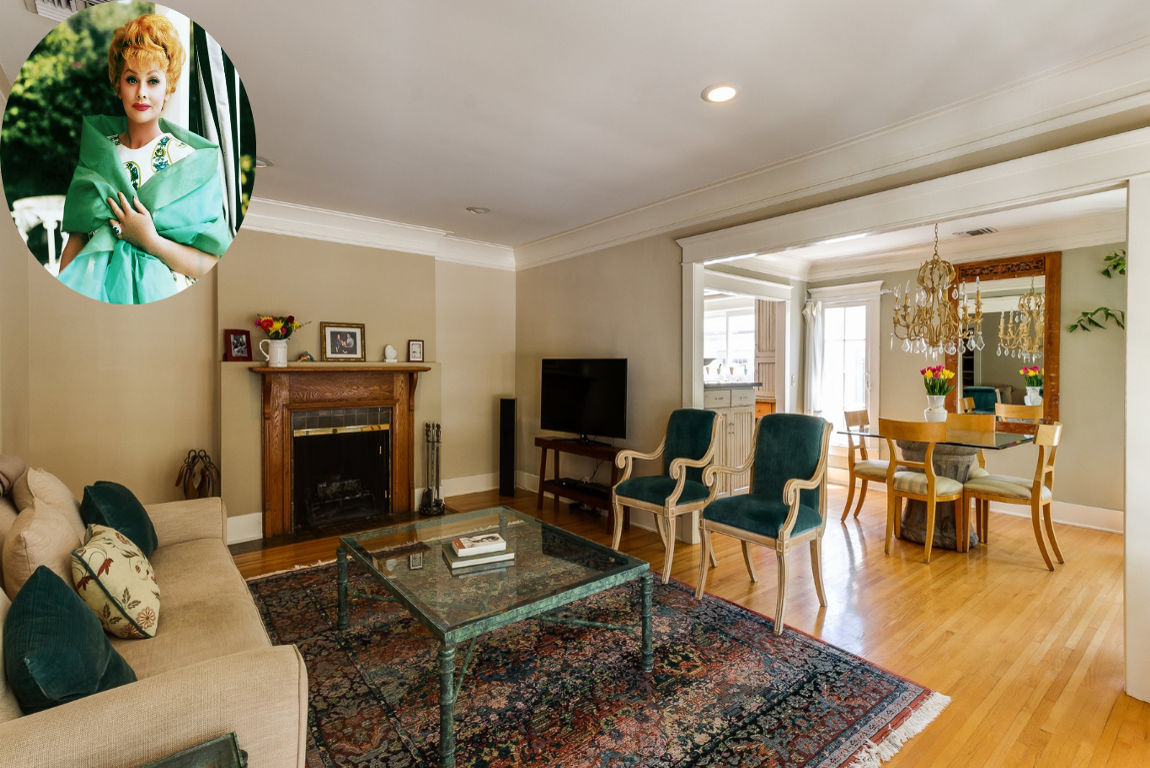
Acquiring the Dream Home
By the mid-1950s, Lucille Ball and Desi Arnaz had reached the pinnacle of Hollywood success. In 1954, they purchased a stunning two-story colonial mansion on North Roxbury Drive in Beverly Hills—a home that would become synonymous with their stardom. After their divorce in 1960, Lucille retained ownership of the house, making it her main residence until her passing in 1989.
Renovations and Design
The mansion, originally built in the 1920s, underwent extensive renovations to suit Lucille’s tastes and needs. Despite the updates, the home retained its classic colonial charm, with symmetrical lines, elegant columns, and decorative shutters. Inside, the rooms were filled with a blend of vintage Hollywood glamour and personal touches that reflected Lucille’s unique style.
Table: Key Features of the Beverly Hills Mansion
FeatureDescription
Location North Roxbury Drive, Beverly Hills
Architectural Style Colonial, built in the 1920s
Notable Elements: Symmetrical design, columns, classic Hollywood details
Renovations: Modern updates while preserving original charm
Use the Family home, entertaining, and personal sanctuary
A Symbol of Success
The Beverly Hills mansion was more than just a beautiful house—it was a symbol of Lucille Ball’s incredible journey from small-town girl to Hollywood royalty. The home became a gathering place for friends, family, and fellow stars, hosting glamorous parties and intimate dinners alike.
You may also read (inside the iconic home of ali macgraw a visual tour).
Entertaining and Later Life
Lucille was known for her hospitality, and the mansion was always filled with laughter, music, and the clinking of glasses. Even as she continued her television career with shows like “The Lucy Show” and “Here’s Lucy,” the Beverly Hills home remained her sanctuary—a place where she could relax, recharge, and enjoy the fruits of her hard work.
Lucille Ball’s Impact on Hollywood and How Her Homes Reflect Her Legacy
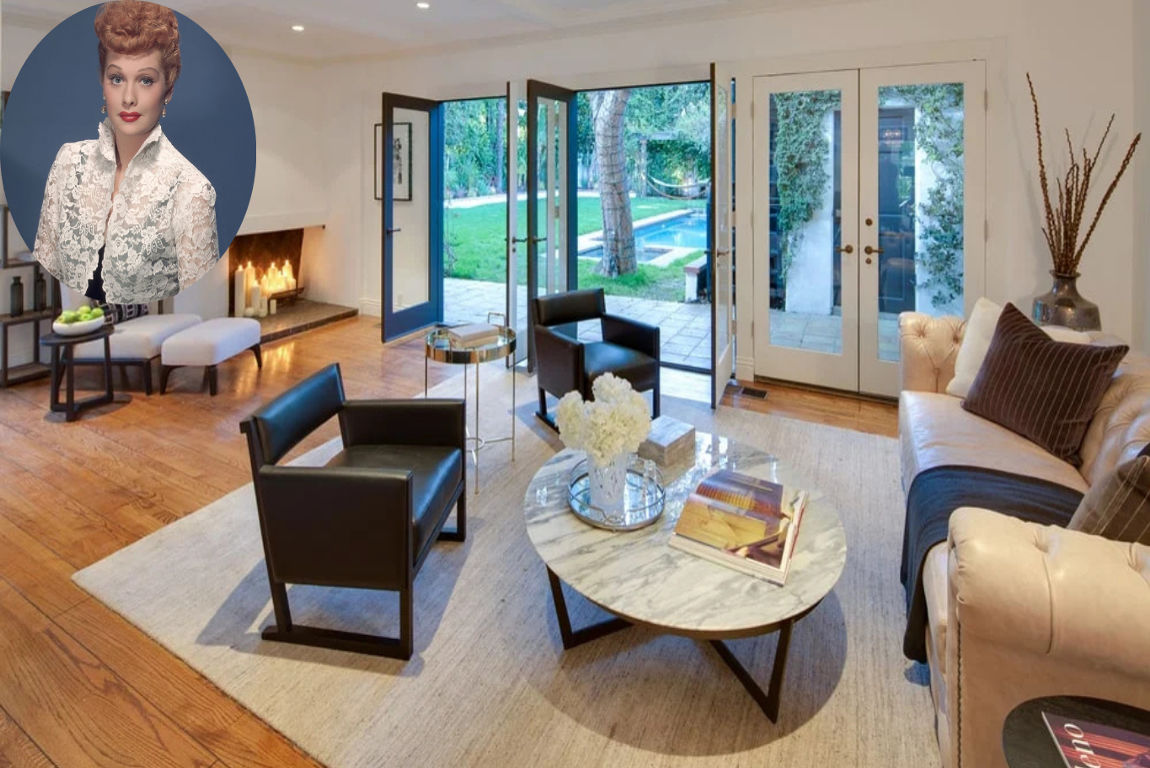
Breaking Barriers as a Businesswoman
Lucille Ball wasn’t just a talented actress—she was a trailblazer in the world of television production. As the co-founder of Desilu Studios with Desi Arnaz, she helped create some of the most iconic shows in TV history, including “I Love Lucy,” “Star Trek,” and “Mission: Impossible”. After her divorce, Lucille made history by buying out Desi’s shares and becoming the first woman to head a major Hollywood studio.
Homes as Mirrors of Her Career
Each Lucille Ball house tells a story about her evolution—from the modest childhood home that taught her resilience, to the creative hub of Desilu Ranch, to the glamorous Beverly Hills mansion that symbolized her success. These homes weren’t just places to live—they were reflections of her journey, her values, and her dreams.
The Symbolic Importance of Her Residences
For fans and historians, Lucille Ball’s homes are more than just real estate. They’re symbols of her multifaceted life—a testament to her strength, creativity, and pioneering spirit. Visiting these places, even virtually, offers a deeper understanding of the woman behind the legend.
Lasting Cultural Significance
Lucille Ball’s influence can still be felt today, not just in reruns of her classic shows, but in the way she paved the way for women in entertainment. Her homes, lovingly preserved and remembered, continue to inspire new generations of fans and creators.
Visiting Lucille Ball’s Homes Today: Preservation and Public Interest
The Childhood Home: A Living Landmark
The house at 59 Lucy Lane in Celeron, New York, stands as a living tribute to Lucille Ball’s legacy. Thanks to the efforts of Bill and Mary Rapaport, the home has been restored to its 1920s glory, with original features carefully preserved. While it remains a private residence, the Rapaports occasionally open it for special events, giving fans a rare chance to step inside the world that shaped a star.
Limited Access to Other Homes
Unfortunately, public access to Lucille Ball’s other homes is limited. The Beverly Hills mansion remains a private residence, and the Desilu Ranch is no longer open to the public. The private bungalow at Paramount Studios is part of a working studio lot, with access generally restricted to studio tours.
Museums, Tours, and Memorials
For those eager to connect with Lucille Ball’s legacy, there are still plenty of options:
- Lucy Desi Museum: Located in Jamestown, New York, this museum features artifacts, costumes, and re-created sets from “I Love Lucy.”
- Lucille Ball Memorial Park: In Celoron, New York, this park features statues and tributes to Lucille Ball.
- Lake View Cemetery: Fans can pay their respects at Lucille Ball’s final resting place, marked by a path of hearts.
Keeping the Memory Alive
Through these sites, as well as books, documentaries, and fan events, Lucille Ball’s memory continues to shine. Her homes, whether open to the public or preserved in photographs and stories, remain a vital part of her enduring legacy.
You may also read (inside dale earnhardt jr s iconic lake norman lakehouse nascar legends luxury retreat and family legacy).

